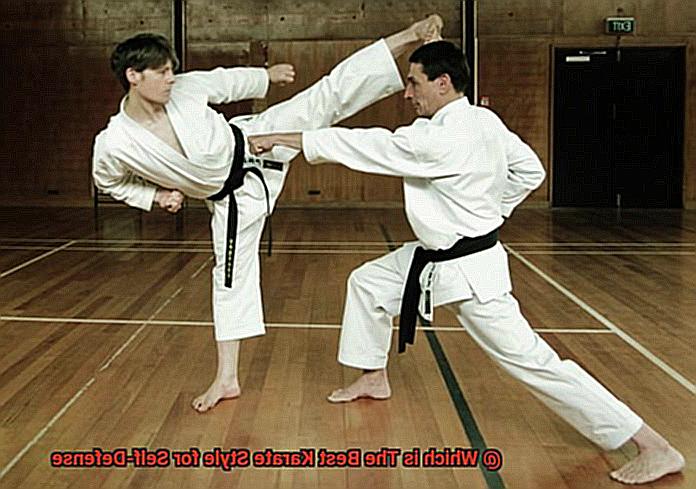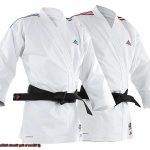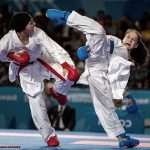Self-defense is an important skill for everyone to have. But which karate style is best for protecting yourself? With so many different forms of karate available, it can be tricky to decide.
This blog post will help you make an informed choice.
We’ll look at traditional Shotokan Karate and modern Wado Ryu Karate, plus more.
Whether you’re a beginner or experienced martial artist, you’ll discover the ideal karate style for self-defense!
Different Types of Karate Styles
Karate has been a beloved martial art for centuries, and today there are two main categories: traditional karate and sports karate. Traditional karate focuses on self-defense techniques such as blocks, strikes, and throws.
Popular styles include Shotokan, Wado-ryu, Goju-ryu, Kyokushin, and Shito-ryu. On the other hand, sports karate is more focused on physical fitness and competition.
Kumite (sparring), Kata (forms), and point fighting (controlled contact sparring) are among the popular sports karate styles.
Due to their realistic training methods that mimic real-life situations, full-contact combat styles such as Kyokushin and Shootboxing have grown in popularity for self-defense.
It’s important to remember that no single style of karate is better than another when it comes to self-defense.
Each style has its own strengths and weaknesses that should be taken into consideration when selecting the best style for you.
Sports Karate vs Full-Contact Fighting Style
Karate is an ancient martial art with many different styles. Two of the most popular styles are sports karate and full-contact fightingst popular styles are sports karate and full-contact fighting. While both are forms of karate, they have distinct differences that make them unique.
Sports karate is designed for tournament competition, emphasizing agility and technique to score points. It also uses kata to demonstrate skill and proficiency in the sport.
Full-contact combat style, on the other hand, is more aggressive and focuses on techniques that can be used in real-world self-defense situations. It involves strikes, kicks, throws, and other physical means to quickly incapacitate an attacker with minimal effort.
Both styles offer numerous benefits to those who practice them. Sports karate helps improve physical fitness, agility, technique, and discipline, while a full-contact combat style teaches self-defense techniques that can be used in dangerous situations.
Kyokushin: Overview and Benefits
Kyokushin is an enthralling martial art style that has taken the world by storm since its inception in 1964. Founded by Masutatsu Oyama, it is a full-contact karate style with a strong emphasis on powerful strikes and kicks. Hard training, physical conditioning, and mental discipline are all central to Kyokushin.
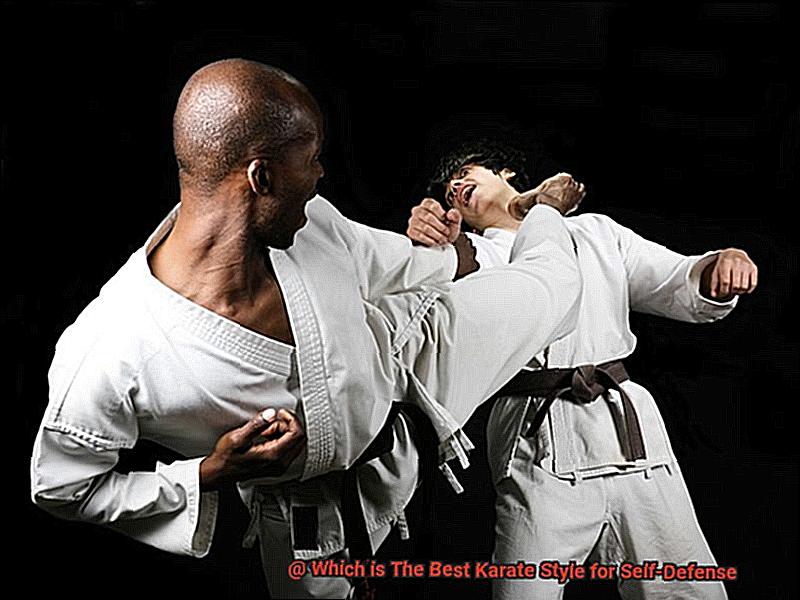
It uses punches, kicks, blocks, and throws to defend against an attacker and also emphasizes the development of character through self-discipline and respect for others.
Kyokushin is renowned for its signature “knockdown” technique, which involves knocking an opponent to the ground with a single strike. But it doesn’t stop there; Kyokushin also focuses on developing balance and coordination through rigorous training drills and sparring sessions.
Practicing Kyokushin offers numerous benefits, including improved physical fitness, increased self-confidence, improved focus and concentration, increased flexibility and agility, better coordination, improved problem-solving skills, better discipline and respect for others, as well as improved mental clarity.
If you’re looking for a martial art style that will help you become physically fit while learning valuable life skills such as discipline and respect for others, then Kyokushin is worth considering.
Shotokan: Overview and Benefits
Shotokan is a renowned, effective martial art that has been around for almost a century. It originated in Japan and is distinguished by linear techniques, powerful strikes and blocks, and deep stances. It’s one of the world’s most popular karate styles and is suitable for both combat and self-defense.
The primary advantage of Shotokan is its strong focus on the basics. Practitioners can build a solid foundation from which to further their skills over time. Furthermore, its use of sophisticated techniques such as kicks and punches makes it an efficient self-defense method.
Additionally, the emphasis on creating strong stances ensures that practitioners have a sturdy base from which to launch attacks or protect themselves against threats.
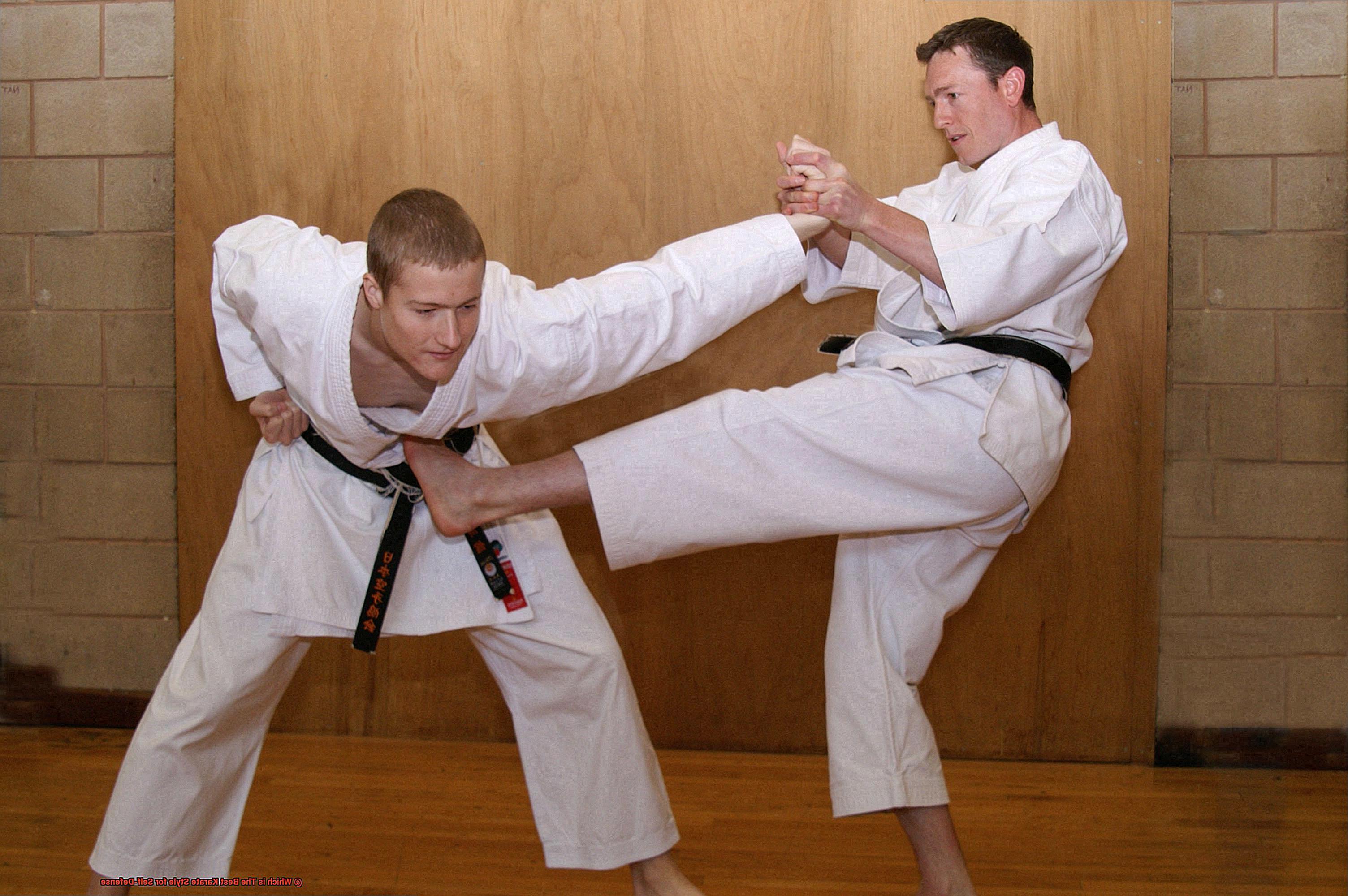
Anyone interested in martial arts or honing their existing skillset will benefit from Shotokan’s versatility. Its linear methods, powerful attacks, deep stances, and strong focus on the basics make it an ideal choice for those looking to become proficient in the martial art quickly.
Self-Defense Techniques in Kyokushin and Shotokan
Are you looking for a martial arts style that offers effective self-defense techniques? Kyokushin and Shotokan are two of the most popular styles, and each has its own unique approach to defending against attackers.
Kyokushin is a full contact karate style that utilizes low kicks, punches, sweeps, and throws to incapacitate or disable an opponent in a self-defense situation.
On the other hand, Shotokan is a traditional karate style that uses blocks, punches, and kicks in combination with parries, blocks, and counterattacks to control and neutralize an attacker.
Comparison of Kyokushin and Shotokan for Self-Defense
When it comes to self-defense, two of the most popular karate styles are Kyokushin and Shotokan. Developed in the 1950s, Kyokushin is a full-contact style that emphasizes strong strikes and powerful kicks. On the other hand, Shotokan was developed in the early 20th century and focuses on precise techniques, as well as form and posture.
For those looking for a style of karate that can be used for self-defense, both Kyokushin and Shotokan offer their own advantages. Kyokushin’s emphasis on physical fitness makes it ideal for situations where one needs to quickly incapacitate an attacker. Meanwhile, Shotokan’s focus on technique can help develop control over an opponent without causing serious injury.
Ultimately, it’s up to the individual to decide which style is best suited for their needs and goals.
Both Kyokushin and Shotokan can be effective forms of self-defense if used properly, so make sure you do your research before making a decision!
Pros and Cons of Each Style for Self-Defense
Self-defense is a critical skill for anyone to possess. Kyokushin and Shotokan are two of the most popular martial arts styles used for self-defense, but each has its own advantages and disadvantages.
Kyokushin is a full-contact combat style designed for practical application in real-life situations. It focuses on conditioning and physical strength, making it well suited for self-defense. However, it can be difficult to learn and requires dedicated practice. It also relies heavily on physical fitness, which may not be suitable for everyone.
Shotokan is a more traditional karate style that is easier to learn than Kyokushin. It emphasizes power and balance, both of which can be useful in self-defense scenarios. On the other hand, it does not focus on full-contact sparring, so its techniques may not be as effective in real-life self-defense situations.
When choosing a style of martial arts for self-defense, consider all of these pros and cons carefully before making your decision.
Conclusion
Kyokushin Karate is the ultimate choice for self-defense.
Combining physical fitness and mental discipline, it equips you with the skills to protect yourself against any threat. With its realistic methods and full-contact sparring, Kyokushin Karate will help you shield yourself from dangerous situations.
Whether you’re a beginner or a veteran martial artist, start learning Kyokushin today and become an expert at safeguarding yourself.

